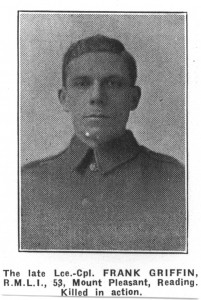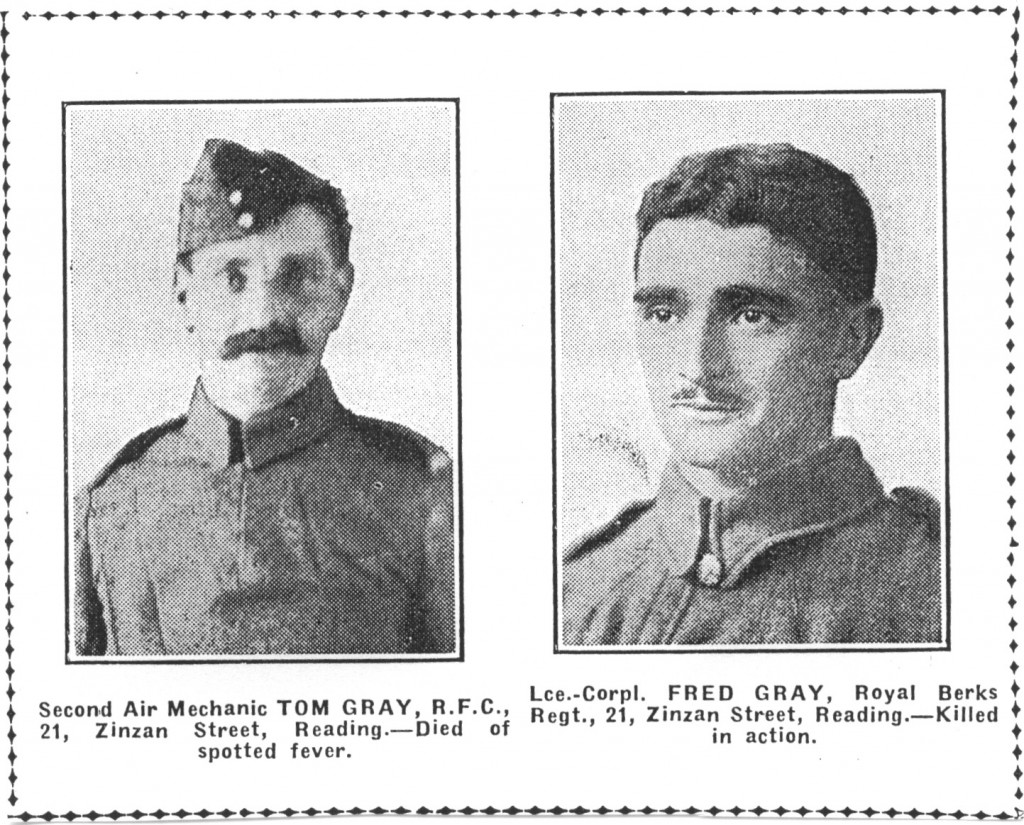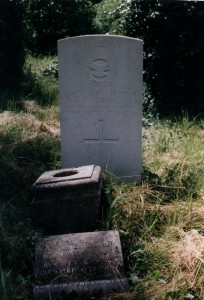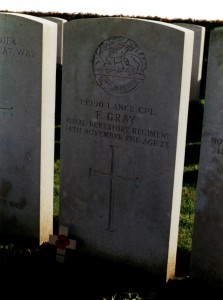Harold Guille
Private 442387
7th Battalion Canadian Infantry (British Columbia Regiment)
Divison 19
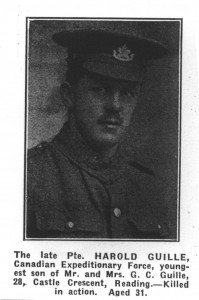 |
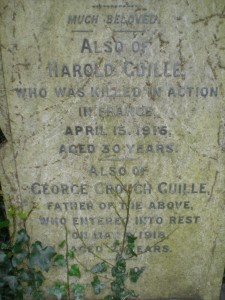 |
Harold Guille was the son of Mr. & Mrs. George C. Guille , of 28, Castle Crescent, Reading. The 1901 census indicated that Harold had two older sisters and a step brother. At the time Harold was fifteen and no occupation is given for him. Further information pertaining to Harold Guille is held in Canadian records and 1911 census however, the CWGC register indicated that he was the husband of May Guille, of Nelson, British Columbia. He was killed in action on the 15th April 1916, aged 31.
Harold Guille is buried in Railway Dugouts Burial Ground (Transport Farm), near Ypres. Plot IV. Row E. 30. The burial ground was started during 1915 and during 1916 and 1917 the farm was usedby Advanced Dressing Stations. After the Armistice the burial ground became a concentration cemetery.
The Second Battle of Ypres drew to a conclusion on 24th May 1915. With it the intense action of the conflict assumed a lower key but, although quieter in many respects, men were still suffering and dying in terrible circumstances. Shelling, mining and raids of one sort or another took their toll of lives. Actions to straighten out the line took place at Bellwaarde Ridge and Hooge Château in July 1915, the British used a massive mine and the Germans used “liquid fire” to reek destruction. Working parties moved through sickening mud and slime, all around the smell of unburied dead. Later in the year the Battle of Loos began and ended, here the British used gas for the first time. Gallipoli was finally evacuated in January 1916, Verdun was attacked in February and the “Big Push” planned for the summer. Around Ypres the shelling, mining, counter mining, trench raids, snow, rain, frost and lice were endured by both sides. On both sides men died in abominable circumstances.
